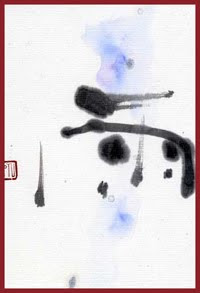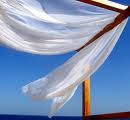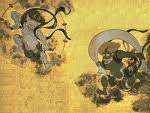::::::::::::::::::::::::::::::::::::::::::::::::::::::::::::::::::::::::::::::::::::::::::::::::::::
Animals in Summer
***** Location: Japan
***** Season: Summer
***** Category: Animal
*****************************
Explanation
Many animals have their main entry in a different season and when mentioned in summer, this has to be added explicitly.
animal in summer
Please check the entries carefully!
In summer, we have a lot of MUSHI 虫, all kinds of insects, bugs, worms, beetles ...
LIST of the Animals in our WKD database
ANIMALS - in all SUMMER kigo
. SEARCH animals names
from A to J
. SEARCH animal names
from K to Z
. BIRDS of SUMMER - Saijiki
. FISH and SEAFOOD - Saijiki
:::::::::::::::::::::::::::::::::::::::::::::::::::::::::::::::::::::::::::::::::::::::::::::::::::
Kigo for early summer
:::::::::::::::::::::::::::::::::::::::::::::::::::::::::::::::::::::::::::::::::::::::::::::::::::
Kigo for mid-summer
:::::::::::::::::::::::::::::::::::::::::::::::::::::::::::::::::::::::::::::::::::::::::::::::::::
Kigo for late summer
hanukedori 羽抜鳥 (はぬけどり) molting bird
hanukedori 羽脱鶏 / 羽抜鶏 (はぬけどり) molting chicken
hanukegamo 羽抜鴨(はぬけがも)molting duck (kamo)
hanuke kiji 羽抜雉子(はぬけきじ)molting pheasant
tori no kaeha 鳥の換羽(とりのかえば) birds changing feathers
nukeha 抜羽 (ぬけは) molted feather
:::::::::::::::::::::::::::::::::::::::::::::::::::::::::::::::::::::::::::::::::::::::::::::::::::
Kigo for all summer
hamaki mushi 葉捲虫 (はまきむし)
"insect that rolls up leaves"
..... cha no ha maki 茶の葉捲虫(ちゃのはまき) ..of tea leaves
There are variuos kinds.

hasamimushi, hasami mushi 挾虫 (はさみむし)
"pincer bug", earwig
shirihasami しりはさみ / 尻挟虫 insect that "attacks on both sides"
("attacks with its backside"), Ohrwurm
Forficula auricularia
magotaroo mushi 孫太郎虫 (まごたろうむし)
Protohermes grandis
another kind of earwig
. . . CLICK here for Photos !
Ohrenkriecher, Ohrwurm
.................................................................................
hiru 蛭 (ひる) leech, Blutegel
chisui hiru 血吸蛭(ちすいびる)blood sucking leech
yamabiru 山蛭(やまびる)mountain leech
umabiru 馬蛭(うまびる)horse leech
hirabiru 扁蛭(ひらびる)
Leeches are annelids comprising the subclass Hirudinea.
© More in the WIKIPEDIA !
. 蛭児大神 Ebisu Deity
蛭児神社 Ebisu Shrine in Kagoshima
.................................................................................

kabutomushi 兜虫 / 甲虫 (かぶとむし) "helmet insect"
rhinoceros beetle, カブトムシ, Kabutomushi beetle
family Coleoptera
kabutomushi 甲虫 "armored insect"
saikachimushi さいかち虫(皀莢虫)"grain-husk insect"
but
saikachi no hana 皀莢の花(さいかちのはな) honey-locust blossom
saikachi さいかち) Saikachi beetle
This is a favorite toy for children in Japan, and sold expensively at animal stores. Many mountain regions specialize on breeding these animals and have regular contests of strenght.
another name is
Genjimushi, Genji mushi 源氏虫(げんじむし) "Genji beetle"
. The Tale of Genji
. more . BEETLES of SUMMER
.................................................................................
kusagi no mushi 常山虫 (くさぎのむし) "stinking bug"
..... kusagimushi くさぎ虫(くさぎむし)
kusagi kamemushi, クサギカメムシ Halyomorpha halys
.................................................................................
namekuji 蛞蝓 (なめくじ) slug, Nacktschnecke
namekujiri なめくじり
namekujira なめくじら
. . . CLICK here for Photos !
nekirimushi, nekiri mushi 根切虫 (ねきりむし)
"root-cutting insect"
Larvae of various insects to this.
. . . CLICK here for Photos !
.................................................................................
shoomei, shoomeimushi 焦螟 (しょうめい) / 焦螟虫
stem borers
meichuu めいちゅう; メイチュウ (螟虫)
larvae of some moths.
Lepidoptera
teppoomushi, teppoo mushi 鉄砲虫 (てっぽうむし)
"cannon insect"
..... yanagi mushi 柳虫(やなぎむし)"willow insect"
kikui mushi 木食虫(きくいむし)"tree-eating insect"
larvae of the kamakiri mushi, mantis and others.
. . . CLICK here for Photos !
*****************************
Worldwide use
*****************************
Things found on the way
*****************************
HAIKU
*****************************
Related words
SUMMER . . . . . ANIMALS -
SAIJIKI . . . LIST
. . . . SUMMER - the complete SAIJIKI
. WKD ... ALL SAIJIKI ... LIST
:::::::::::::::::::::::::::::::::::::::::::::::::::::::::::::::::::::::::::::::::::::::::::::::::::
SUMMER ANIMALS - SAIJIKI .. LIST
BACKUP of the Yahoo List
000 . . . . . ANIMALS in SUMMER
Introduction to this saijiki
http://wkdkigodatabase03.blogspot.com/2010/05/animals-in-summer-saijiki.html
001 . . . . . Birds of summer
SAIJIKI
http://wkdkigodatabase03.blogspot.com/2008/01/birds-of-summer.html
002 . . . . . Fish and seafood
SAIJIKI
http://washokufood.blogspot.com/2008_09_01_archive.html
ant (ari), aphid (arimaki)
a KIGO list
http://worldkigo2005.blogspot.com/2005/01/ant-ari-05.html worldkigo
Edit Delete Cut
ant lion, antlion doodlebug (ari jigoku, arijigoku)
"hell for the ants"
http://worldkigo2005.blogspot.com/2005/01/ant-ari-05.html worldkigo
Edit Delete Cut
bat (koomori)
Chiroptera family
http://wkdkigodatabase03.blogspot.com/2008/01/bat-koomori.html worldkigo
Edit Delete Cut
beetles of summer
a . long . KIGO list
http://wkdkigodatabase03.blogspot.com/2010/11/beetles.html worldkigo
Edit Delete Cut
butterfly in summer (natsu no choo)
more BUTTERFLY kigo
http://worldkigodatabase.blogspot.com/2005/02/butterfly-choochoo.html worldkigo
Edit Delete Cut
caterpillar (kemushi) woolybear, looper, inchworm, shakutori
a KIGO list
http://worldkigo2005.blogspot.com/2005/03/caterpillars.html worldkigo
Edit Delete Cut
centipede, millipede (mukade)
"one hundred legs".
http://haikuandhappiness.blogspot.com/2007/06/mukade.html worldkigo
Edit Delete Cut
cidada, locust (semi)
more CICADA kigo. higurashi
http://worldkigo2005.blogspot.com/2005/03/cicada-semi-05.html worldkigo
Edit Delete Cut
cockroach (gokiburi)
more BEETLES of summer
http://wkdkigodatabase03.blogspot.com/2008/05/cockroach-gokiburi.html worldkigo
Edit Delete Cut
damselfly (itotonbo, ito tonbo)
more DRAGONFLY kigo
http://worldkigo2005.blogspot.com/2005/04/dragonfly-tonbo-05.html worldkigo
Edit Delete Cut
deer baby, fawn, Bambi (shika no ko)
more DEER kigo. young deer horns
http://worldkigo2005.blogspot.com/2005/04/deer-shika.html worldkigo
Edit Delete Cut
dragonfly larvae (yago, tongo no ko)
more DRAGONFLY kigo. other dragonflies of summer
http://worldkigo2005.blogspot.com/2005/04/dragonfly-tonbo-05.html worldkigo
Edit Delete Cut
drosophila fly (shoojoobae)
more about Shojo, the tipster sprite
http://wkdhaikutopics.blogspot.com/2007/03/yugen-yuugen.html worldkigo
Edit Delete Cut
earthworm (mimizu)
mole cricket (kera)
http://worldkigodatabase.blogspot.com/2010/10/earthworm-mimizu-and-mole-cricket.html worldkigo
Edit Delete Cut
firefly, fireflies (hotaru)
more FIREFLY kigo
http://worldkigo2005.blogspot.com/2005/06/fireflies-hotaru-05.html worldkigo
Edit Delete Cut
flea, fleas (nomi)
Floh.
http://wkdkigodatabase03.blogspot.com/2007/07/fleas-and-lice.html worldkigo
Edit Delete Cut
fly, flies (hae)
more FLY kigo
http://worldkigo2005.blogspot.com/2005/06/fly-flies-hae.html worldkigo
Edit Delete Cut
frog in summer (natsugaeru, natsu gaeru)
a FROG list. toad (hikigaeru)
http://worldkigo2005.blogspot.com/2005/06/frog-kawazu-kaeru.html worldkigo
Edit Delete Cut
galley worm, house centipede (gejigeji)
http://wkdhaikutopics.blogspot.com/2007/12/onomatopoetic-words.html worldkigo
Edit Delete Cut
ladybird, ladybug (tentoomushi)
Glueckskaefer, Marienkaefer
http://worldkigo2005.blogspot.com/2005/12/ladybird-tentoomushi-05.html worldkigo
Edit Delete Cut
lizard, salamander, gecko and others
tokage, yamori, imori, sanshoo uo,
http://haikuandhappiness.blogspot.com/2007/06/lizard.html worldkigo
Edit Delete Cut
louse, lice (shirami)
Laus
http://wkdkigodatabase03.blogspot.com/2007/07/fleas-and-lice.html worldkigo
Edit Delete Cut
maggot, maggots (uji, ujimushi)
and some hell paintings
http://worldkigodatabase.blogspot.com/2009/11/maggot-ujimushi.html worldkigo
Edit Delete Cut
mosquito, mosquitoes (ka). gnat (buyo), midge (mematoi)
more MOSQUITO kigo. daddy longlegs (gaganbo)
http://worldkigodatabase.blogspot.com/2006/01/mosquitoes-ka.html worldkigo
Edit Delete Cut
moth (ga) , clothes moth, bookworm (shimi)
hitori mushi 火取虫 fire catching insect/ a KIGO list
http://worldkigo2005.blogspot.com/2006/01/moth-ga.html worldkigo
Edit Delete Cut
praying mantiss babies (ko kamakiri)
more MANTIS kigo
http://worldkigo2005.blogspot.com/2006/04/praying-mantis.html worldkigo
Edit Delete Cut
salamander (sanshoouo), gecko (yamori, iimori)
a KIGO list about lizzards
http://haikuandhappiness.blogspot.com/2007/06/lizard.html worldkigo
Edit Delete Cut
scorpion (sasori)
order Scorpionida. Skorpion
http://wkdkigodatabase03.blogspot.com/2009/03/scorpion-sasori.html worldkigo
Edit Delete Cut
sea turtle (umigame)
turtle babies (kame no ko) / more TURTLE kigo
http://wkdkigodatabase03.blogspot.com/2008/05/turtle-kame.html worldkigo
Edit Delete Cut
silkworm in summer (natsugo)
more SILKWORM kigo
http://wkdkigodatabase03.blogspot.com/2007/08/silk-kinu.html worldkigo
Edit Delete Cut
snail (katatsumuri, dedemushi)
Fam. Gastporopoa
http://wkdkigodatabase03.blogspot.com/2007/03/snail-katatsumuri.html worldkigo
Edit Delete Cut
snake, serpent (hebi), viper (habu)
a KIGO list
http://worldkigo2005.blogspot.com/2006/07/snake-hebi.html worldkigo
Edit Delete Cut
sparrow egg (suzume no tamago)
more SPARROW kigo
http://worldkigo2005.blogspot.com/2006/07/sparrow-suzume.html worldkigo
Edit Delete Cut
spider (kumo)
Spinne. a KIGO list
http://worldkigo2005.blogspot.com/2006/07/spider-kumo.html worldkigo
Edit Delete Cut
tick (dani)
Fam. Acari. Zecke
http://wkdkigodatabase03.blogspot.com/2007/07/fleas-and-lice.html worldkigo
Edit Delete Cut
water beetles (mizumushi, gengoro, tagame ...)
a KIGO list
http://wkdkigodatabase03.blogspot.com/2010/11/beetles.html worldkigo
Edit Delete Cut
worms of all kinds
a KIGO list
http://worldkigodatabase.blogspot.com/2010/10/earthworm-mimizu-and-mole-cricket.html worldkigo
zzz ..... Animals in Summer - SAIJIKI
Introduction to this saijiki
http://wkdkigodatabase03.blogspot.com/2010/05/animals-in-summer-saijiki.html
:::::::::::::::::::::::::::::::::::::::::::::::::::::::::::::::::::::::::::::::::::::::::::::::::::
ANIMALS - - - the Complete SAIJIKI
. ANIMALS IN SPRING
SAIJIKI
. ANIMALS in SUMMER
SAIJIKI
. ANIMALS in AUTUMN
SAIJIKI
. ANIMALS in WINTER
SAIJIKI
. ANIMALS in the NEW YEAR
SAIJIKI
NEXT
. PLANTS in SUMMER - SAIJIKI
:::::::::::::::::::::::::::::::::::::::::::::::::::::::::::::::::::::::::::::::::::::::::::::::::::























